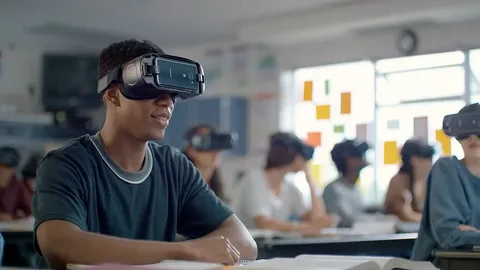In recent years, Artificial Intelligence (AI) has infiltrated various sectors, revolutionizing how we work, play, and learn. Education, a field at the heart of human development, is no exception. But what does the integration of AI bring to our classrooms and educational systems? Let’s dive deep into the pros and cons of AI in education, examining its impact through a lens that considers both our immediate needs and future aspirations.
AI in Education: An Overview
Education has always evolved to incorporate new methodologies and technologies, from the humble chalkboard to the digital tablet. AI represents the latest frontier in this evolution, promising to enhance educational experiences significantly. But what exactly does AI entail in the context of education?
The Pros of AI in Education

Enhancing Personalized Learning
One of the most celebrated advantages of AI is its ability to create highly personalized learning experiences. Imagine a classroom where every student receives instruction tailored specifically to their learning pace, style, and interests. AI algorithms analyze data on students’ performance to provide customized resources and assignments, making learning more engaging and effective.
Automating Administrative Tasks
Teachers often spend hours on administrative tasks that could be automated by AI. Tasks such as grading, attendance, and scheduling can be managed more efficiently with AI tools, freeing up educators to focus more on teaching and less on paperwork.
Providing Accessible Education
AI technology has the potential to break down barriers for students with disabilities or those in remote areas. Tools like voice-to-text applications or learning platforms that adapt to each student’s needs make education more inclusive and accessible to all.
The Cons of AI in Education
Ethical Concerns and Bias
With AI, there’s a risk of inheriting and even amplifying biases present in their training data or algorithms. Ethical concerns also arise regarding surveillance and data privacy, particularly concerning minors.
The Cost of Implementation
Integrating AI into educational settings can be costly, requiring not only funds for technology but also for training educators and maintaining systems. This can be a significant barrier, particularly for under-resourced schools.
Potential Dependency on Technology
Relying too heavily on AI can lead to a decrease in critical thinking and problem-solving skills among students. It’s crucial to strike a balance between using AI tools and maintaining traditional educational practices that encourage deeper understanding and creativity.
AI in the Classroom: Real-Life Examples

Exploring how AI is already being used in some classrooms around the world can provide insights into both its potential benefits and limitations.
The Future of AI in Education
What does the future hold for AI in education? As technology advances, it’s likely that AI will become even more integrated into educational systems, potentially transforming learning in unprecedented ways.
How Teachers Can Adapt to AI
For teachers, adapting to AI in education means more than just learning to use new tools. It involves a paradigm shift in teaching methods and a reevaluation of the teacher-student dynamic.
The Role of Data Privacy
In the age of AI, protecting students’ personal information has become more crucial than ever. Educators and policymakers must ensure robust data privacy measures are in place to secure sensitive information.
Conclusion
The journey of integrating AI into education is complex and filled with challenges. However, the potential benefits could significantly transform how we teach and learn. As we navigate this landscape, it’s essential to weigh both the pros and cons carefully to make informed decisions that will benefit future generations.
FAQs
1. How does AI personalize learning?
AI analyzes student data to tailor learning materials and pacing to individual needs, enhancing engagement and effectiveness.
2. What are the risks of AI in education?
Risks include potential biases in AI algorithms, ethical concerns regarding student surveillance, and the cost of technology implementation.
3. Can AI replace teachers?
No, AI is intended to supplement and support teachers, not replace them. The human element remains crucial in education.
4. What are some examples of AI in classrooms today?
Examples include AI-based tutoring systems, educational software that adapts to student responses, and automation of administrative tasks.
5. What can educators do to prepare for AI integration?
Educators can familiarize themselves with AI technologies, engage in professional development opportunities, and consider the ethical implications of AI use.

